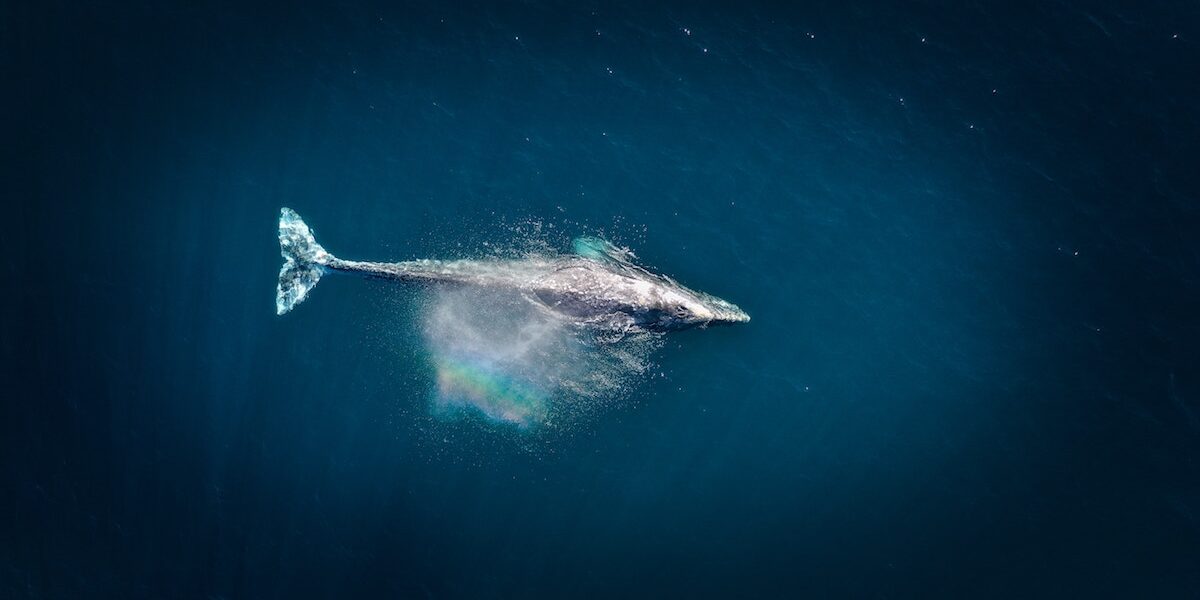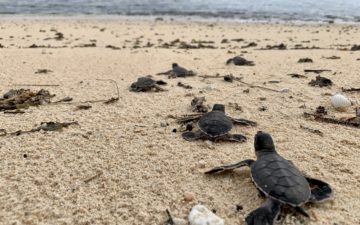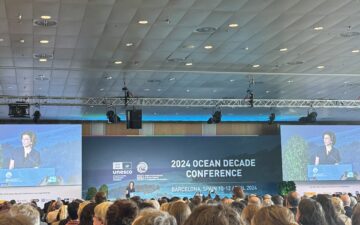By Mark J. Spalding, President, The Ocean Foundation
This blog originally appeared on National Geographic’s Oceans Views.
It’s gray whale migration season on the west coast of North America.
Gray whales make one of the longest migrations of any mammal on Earth. Every year they swim over 10,000 miles roundtrip between Mexico’s nursery lagoons and feeding grounds in the Arctic. At this time of year, the last of the mother whales are arriving to give birth and the first of the males are making their way north—11 have been sighted in the first week of watching the Santa Barbara channel. The lagoon will be filling with newborns as the birthing season reaches its peak.
One of my early major marine conservation campaigns was to help with the protection of Laguna San Ignacio in Baja California Sur, a primary gray whale breeding and nursery estuary—and still, I believe, one of the most beautiful places on Earth. In the late 1980’s, Mitsubishi proposed establishing a major salt works in Laguna San Ignacio. The Mexican government was inclined to approve it for economic development reasons, despite the fact that the lagoon has multiple designations as a protected area both nationally and internationally.
A determined five-year campaign drew thousands of donors who supported an international effort that was implemented by a partnership that included many organizations. Movie stars and famous musicians joined with local activists and American campaigners to stop the salt works and bring international attention to the plight of the gray whale. In 2000, Mitsubishi declared its intention to withdraw its plans. We had won!
In 2010, the veterans of that campaign gathered at one of the rustic camps of Laguna San Ignacio to celebrate the 10th anniversary of that victory. We took the children of the local community out on their first whale-watching expedition—an activity that provides the winter livelihood for their families. Our group included campaigners such as Joel Reynolds of NRDC who still works on behalf of marine mammals every day, and Jared Blumenfeld, who has gone on to serve the environment in government service.
Also among us was Patricia Martinez, one of the conservation leaders in Baja California whose commitment and drive carried her places she could not have imagined in defense of that beautiful lagoon. We traveled to Morocco and Japan, among other places, to defend the lagoon’s World Heritage status and ensure global recognition for the threats it faced. Patricia, her sister Laura, and other community representatives were a major part of our success and remain a continuing presence in defense of other threatened places along the Baja California peninsula.
Looking to the Future
In early February, I attended the Southern California Marine Mammal Workshop. Hosted by Pacific Life Foundation in partnership with The Ocean Foundation, this workshop has been held in Newport Beach each year since January 2010. From senior researchers to marine mammal veterinarians to young Ph.D. candidates, the workshop participants represent an array of government and educational institutions, as well as a handful of other funders and NGOs. The focus of the research is on marine mammals in the Southern California Bight, a 90,000 square mile area of the Eastern Pacific extending 450 miles along the Pacific Ocean coast from Point Conception near Santa Barbara south to Cabo Colonet in Baja California, Mexico.
The threats to marine mammals are diverse—from emerging diseases to shifts in ocean chemistry and temperature to fatal interactions with human activities. Yet, the energy and enthusiasm of the collaborations that emerge from this workshop inspires hope that we will succeed in promoting the health and protection of all marine mammals. And, it was gratifying to hear how well the gray whale population is recovering thanks to international protections and local vigilance.
In the beginning of March, we will toast the 13th anniversary of our victory in Laguna San Ignacio. It will be bittersweet to remember those heady days because I am sorry to say that Patricia Martinez lost her struggle with cancer at the end of January. She was a valiant spirit and a passionate animal lover, as well as a wonderful sister, colleague, and friend. The story of the gray whale nursery of Laguna San Ignacio is story of protection supported by vigilance and enforcement, it is the story of local, regional, and international cooperation, and it is the story of working out the differences to achieve a common goal. By this time next year, a paved highway will connect the lagoon to the rest of the world for the first time. It will bring changes.
We can hope that most of those changes are for the good of the whales and the small human communities who depend on them—and for the lucky visitors who get to see these magnificent creatures up close. And I expect that it will serve as a reminder to remain supportive and vigilant to ensure that the gray whale success story remains a success story.







